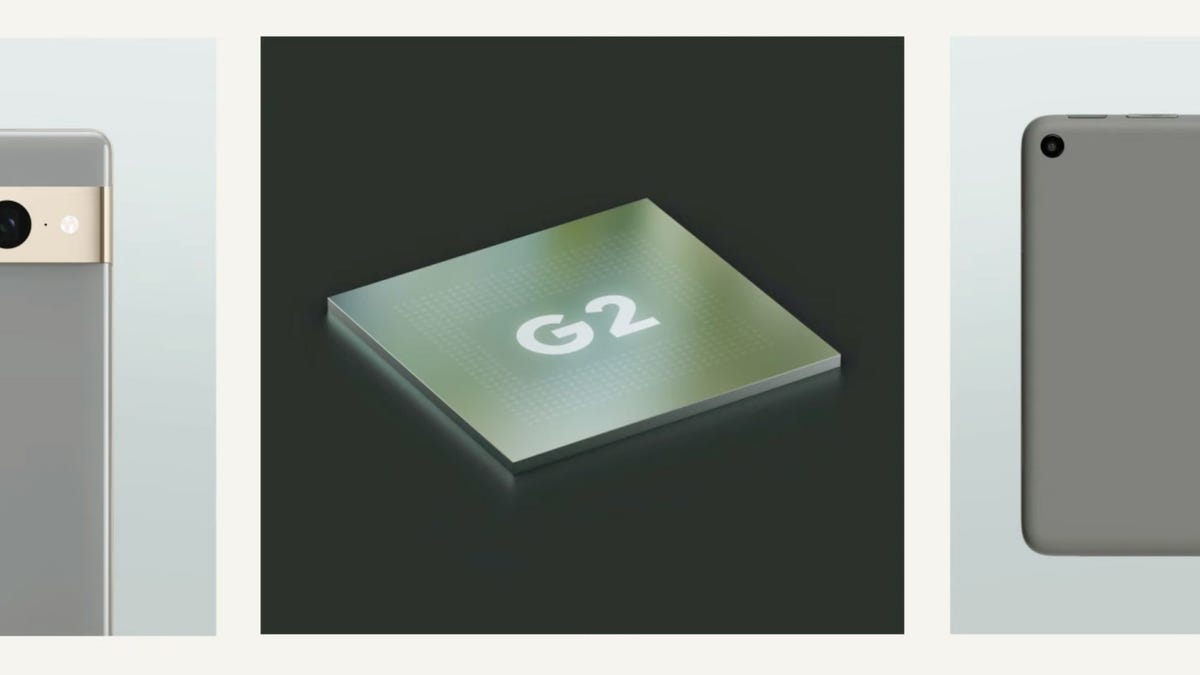Google's Tensor G2 Chip Is Key to Many Pixel 7 AI-Powered Abilities
The Tensor G2's AI acceleration enables features like processing photos and translating languages. With it, converting speech to text is 70% faster.

Google's Tensor G2 processor powers its Pixel 7 and Pixel 7 Pro phones and its Pixel Tablet.
Google on Thursday revealed its Tensor G2 smartphone processor, the second-generation design of the digital brains that accelerate AI abilities on its Pixel 7 and Pixel 7 Pro smartphones.
The Tensor G2 is key to many Pixel 7 AI-powered abilities, like recognizing human speech, filtering out background noise during phone calls, translating speech into text or a different language, and perhaps most importantly, processing photos and videos.
"We've added a next-generation on-device TPU [tensor processing unit], which keeps up with our rapidly evolving machine learning research," Google device chief Rick Osterloh said at Google's hardware launch event in New York, where the company also touted new Google network routers, doorbells and the Pixel Watch.
The Tensor name stems from the mathematical concept that's core to the artificial intelligence calculations that Google wants to speed up on its processor. Google calls its AI accelerator a TPU, but those modules go by many other names, too, like Apple's Neural Engine.
With the Tensor G2, AI can be much more useful without draining the phone's battery -- and battery life was a big criticism of last year's Pixel 6 models. The G2 converts text to speech 70% faster at half the power consumption, Google said. Translating speech is 60% faster and uses 20% less power.
Processors lay the foundations for a phone's abilities. The Pixel 6's first-generation Tensor chip included eight central processing units, or CPUs: two fast cores, with 2.86GHz clock speeds for the most important tasks; two midrange cores, ticking at 2.25GHz; and four small, efficient A55 cores, at 1.8GHz for work that's gentle on the battery. Those CPUs are accompanied by a graphics processing unit, or GPU, image processors, AI accelerators and other modules.
Tensor G2 keeps the same basic design with a modest CPU upgrade, including its reliance on chip designer Arm. Unchanged from the first-generation Tensor are the two fast CPU cores, which employ the Cortex-X1 design, and the four efficiency-focused CPU cores, which use Arm's A55 design. The midrange CPU cores have been upgraded to newer A78 designs running at 2.36GHz.
Google also switched the Tensor's GPU from an Arm Mali-G78 MP20 to the newer Mali-G701 MP07.
Google didn't say who's making its Tensor processors, but Samsung Foundry made the first-generation design with its 5-nanometer manufacturing process, according to TechInsights analyst Linley Gwennap.
For all the emphasis Google puts on Tensor's AI abilities, it isn't always the industry leader. The Pixel 6's first generation Tensor processor trailed smartphone processors from MediaTek, Qualcomm and Samsung, Gwennap concluded in an August report. Worse, it took up more chip surface area, which means it cost more to build.

